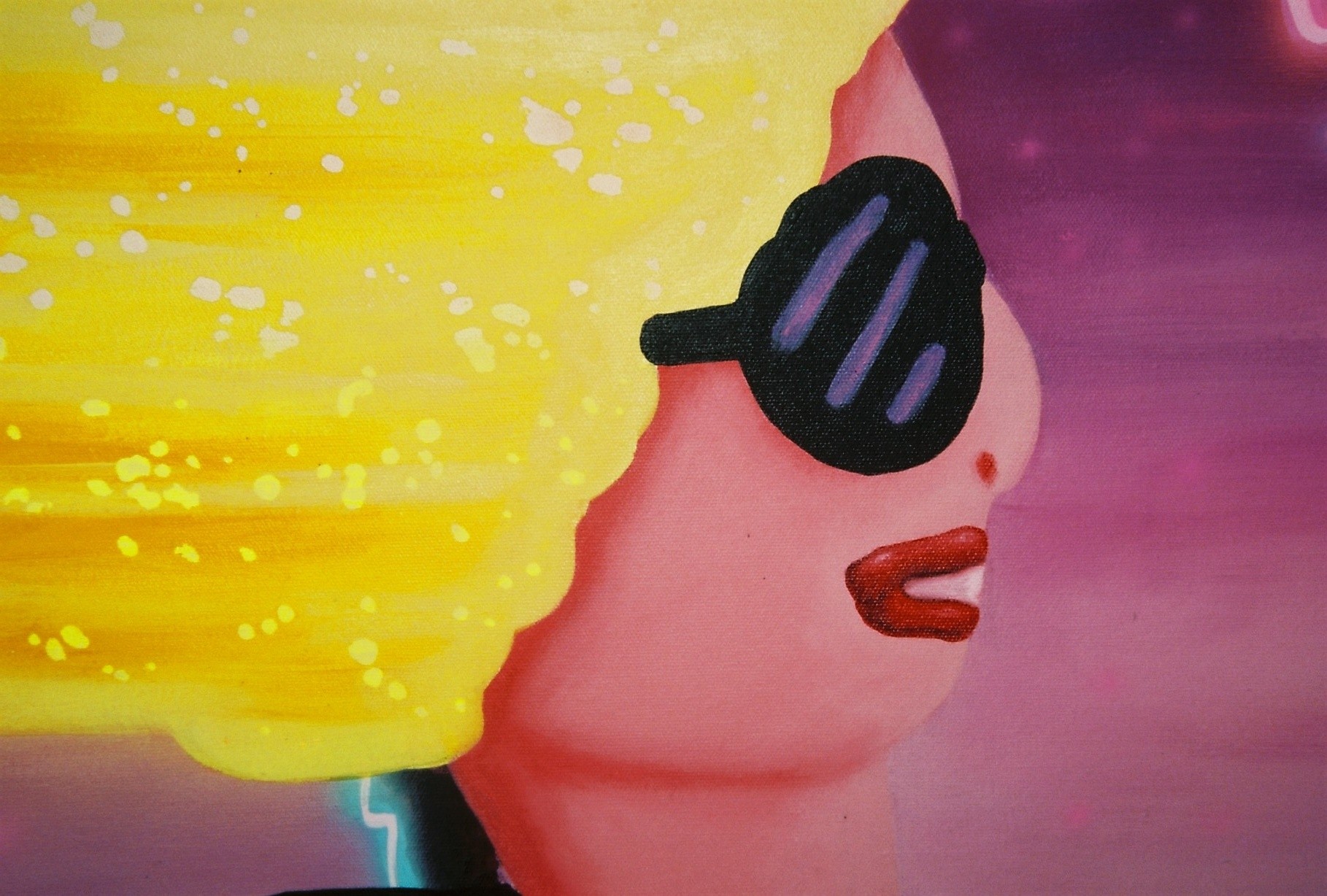







Meet the artist that represents the time that we live in.
During a recent studio visit, we got behind the frustrations of Dominic Dispirito, and discussed how his art can be used for positive change. The artist portrays authentic experiences of growing up in a British working-class environment, and believes that this topic is not being spoken about enough. As a response, his recent works at Annka Kultys Gallery explore these topics under green neon lights and altered sounds, experimenting with the viewers senses. In this interactive context, we discover that his art has less to do with him, and more to do with the people.

BACKGROUND & PROCESS
Experiences of your past in London, in a working class environment has nourished your work to a great extent. What can you tell us about these particular experiences that have shaped your practice?
Well, I feel like the subject matter has always been in me. I think that when you are portraying authentic experiences you are able to get it right if you know what I mean. I don’t need to be an actor because I’ve actually experienced it. Also, I feel like this was born out of frustration of knowing that working class people are oppressed and under represented in the arts, and it is not being spoken about enough.

Irony and humour are perceived in the titles of your works. Would you agree in saying that they represent an indictment at the same time?
I think I’m just reflecting the society that we live in. If it gets people talking then that’s a good thing. I’m aware that as an artist I have a platform, and it makes me feel useful when I can use this platform for positive change.
Your process comprises digital tools such as iPhone apps or Polaroid 3D printers. Would you consider that these innovative techniques parallel the time that we live in?
Yes. Again, I’m reflecting the current time in which we live.


A year after finishing your M.F.A from the Slade School of Art, you got represented by Annka Kultys Gallery. Having said this, what are your views on the under-representation of working class artists and other minority groups?
It needs to change, we need to change it. I mean, whose world is it anyway? The oppressed definitely outnumber the privileged, so let’s do something about it.
WORK
During my studio visit, you stated: “My art has less to do with me now and more to do with the people”. Can you tell us how this is related to your current body of work “In the Garden, Council Housed and Violent”?
I’m not alone in this world, like I said earlier, plenty of people are oppressed. So, I think it would be a bit selfish and self-obsessed to go on about myself all of the time.


Contemplating your paintings and sculptures under a green neon lighting and altered sound at your first solo show at Annka Kultys Gallery is a playful environment that awakens the senses of the viewer; what effect are you aiming to transmit by combining these elements?
I’m thinking of an experience which affects all of the senses. Two experiences are better than one.
Your characters seem ambiguous and peculiar, often multi-coloured and surrounded with props. Can you tell us more about these aesthetic choices?
I think that I’d like to leave that open to you. It’s good to have freedom to respond the way you would like to.


‘The Pearly Queen and King of Hackney’ is a recurrent topic that has been repeated in your last series. What is the meaning behind this and why do you find inspiration from them?
It’s a very simple thing really, I’m representing my cockney heritage.
FUTURE
Do you have any upcoming exhibitions or projects? Where do you see yourself in five years’ time?
Hopefully, I’ll still be showing my art in different places. I’d really love to have a show in the States. Hopefully, the world will be a little more equal by then.
26.07.18
Words by Vanessa Murrell
Related
Studio Visit

Dominic Dispirito
Interview

